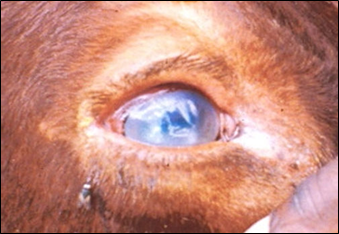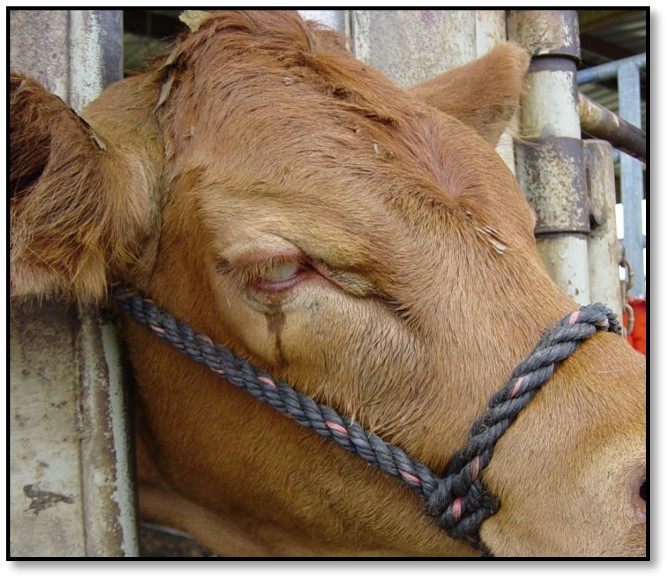Now is the time to ramp up your fly control program!
Severe fly infestations have been associated with increased incidence of pinkeye, or infectious bovine keratoconjunctivitis (IBK). Affected animals will develop epiphora (runny eyes), conjunctivitis, and corneal ulcers and scarring in more severe conditions. Severe scarring may result in permanent blindness. Photophobia (sensitivity to light) occurs and affected animals can be seen squinting and seeking shaded areas for relief.

Pinkeye can be a very costly disease to beef producers from treatment costs (including labor and antibiotic costs), reduced value of animals with scarred eyes, and potentially reduced weaning weights of calves. Animals suffering from pinkeye may have decreased appetite due to ocular pain or decreased vision that results in an inability to locate food and water.
Pinkeye is a multifactorial disease, which means that it has many factors that contribute to the development of the disease, including bacteria and viruses. The causative organisms can be transmitted by the face fly as they feed on the eye secretions of affected animals. Flies can cause immense irritation and inflammation to the eye, predisposing the animal to subsequent infection. Other irritants such as excessive ultraviolet light (sunlight), dust, grasses, and pollens may also predispose or worsen the disease in your herd.
Fly control is an essential component of both the prevention and treatment of pinkeye outbreaks. Keeping pasture cut and free of potentially irritating seedheads is an equally important component of control since small cuts or abrasions on the eye can allow the infectious organism to gain entry. Early treatment of pinkeye is essential for a successful outcome, and to stop the shedding of bacteria and decrease the risk of transmission to other cattle. Long-acting oxytetracycline injections have been shown to be effective when used early. It is important to remember that pinkeye is contagious, so persons or equipment coming in contact with infected animals can essentially spread the disease.
Pinkeye cases seem to increase in cattle during the late summer and early fall here in the Southeastern US. Peak fly season is just around the corner, so it is not too early to start your prevention program. Because of the many factors that predispose an animal to pinkeye, no one single management practice will be successful in preventing and controlling the disease. By understanding and managing these risk factors, we can prevent or reduce the incidence of pinkeye in our herds.
Click Below to Read Part II: Cancer Eye of the Ocular Lesions in Cattle Series

